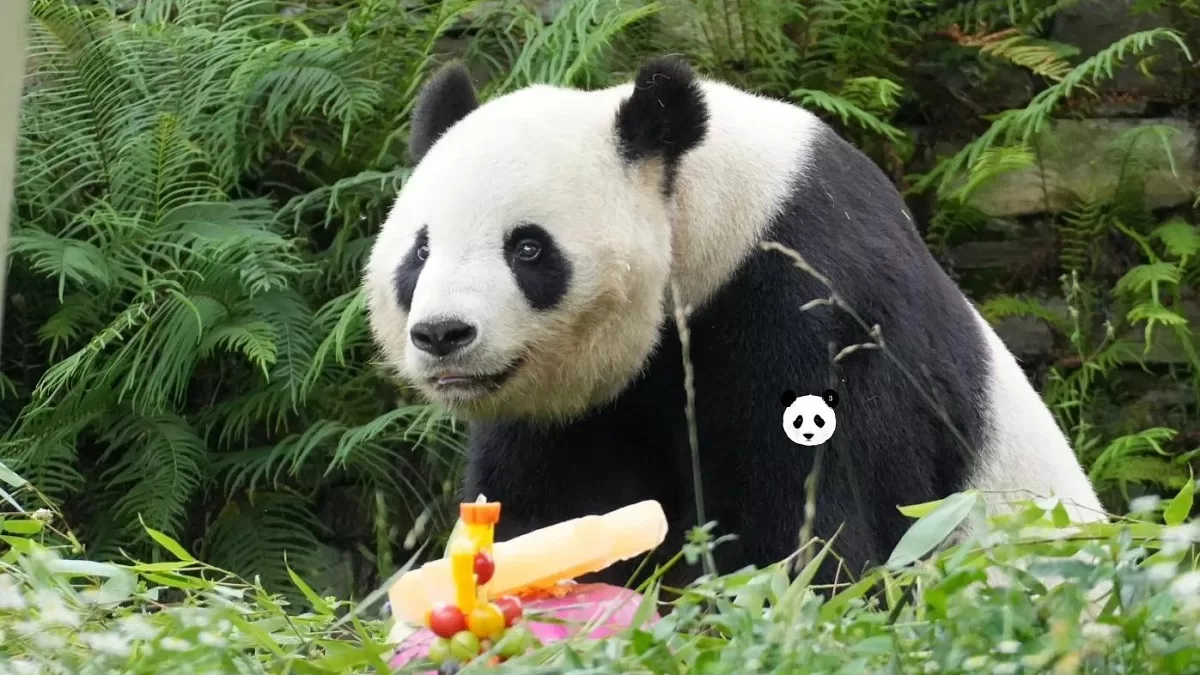Tai Shan (泰山), a panda whose charm knows no bounds, captivated the world from the moment he was born at the Smithsonian’s National Zoo. His endearing personality and celebrity status skyrocketed, from a sneeze video that became a YouTube sensation to his role as the star of China’s first animated panda film. With a name meaning “Peaceful Mountain,” Tai Shan’s journey is one of affection, fame, and unforgettable moments, winning hearts globally and inspiring panda lovers everywhere.
Basic Information
- Name: Tai Shan (泰山)
- Meaning of the Name: Peaceful Mountain
- Gender: Male
- Lineage Number: 595
- Date of Birth: July 9, 2005
- Place of Birth: Smithsonian’s National Zoo, Washington, D.C. (now National Zoo)
- Father: Tian Tian (添添)
- Mother: Mei Xiang (美香)
- Siblings: Ao Ao (傲傲), Bao Bao (宝宝), Bei Bei (贝贝), and Xiao Qi Ji (小奇迹)
Intriguing Details of Panda Tai Shan
Name Origin: Around 100 days after his birth, the name “Tai Shan” was selected through a public voting process involving over 200,000 Washington residents. The name, which means “Peaceful Mountain,” was chosen to reflect the hopes for his future.
Rising Fame: When a video of Tai Shan sneezing was posted on YouTube, his fame skyrocketed to celebrity status. The video garnered over 51 million views. Children from forty U.S. states participated in a “Coins for Pandas” campaign, making and selling panda-themed necklaces, pillows, cookies, posters, and more to raise $16,000 for panda conservation.
Tai Shan Fever: When Tai Shan made his debut in December 2005, 13,000 free tickets were snapped up in under two hours. The press conference was a massive event, attracting 59 media outlets and resulting in over 3,000 news reports. The U.S. now had its largest panda “fan club.” Every year, fans from across the country would travel to celebrate Tai Shan’s birthday. In Washington, D.C., a city often dominated by political news, any topic related to Tai Shan could make the front page. As Washington D.C. Mayor Adrian Fenty put it, Tai Shan was “the most important citizen” in the U.S. capital.
Movie Star: Tai Shan was the inspiration for the main character in China’s first animated movie featuring a giant panda, I Come from China: Panda Tai Shan.
Life Experience of Panda Tai Shan
Birth and Early Life: Tai Shan made history as the first giant panda cub born and successfully raised at the Smithsonian’s National Zoo. His birth sparked a renewed wave of “panda fever” across the United States. The National Zoo launched a detailed growth record for Tai Shan, including live streaming of his daily activities.
Return to China: According to the agreement between China and the United States, Tai Shan was scheduled to return to China on his second birthday, July 9, 2007. However, due to strong requests from the zoo in Washington, D.C., his departure was postponed several times. Eventually, he returned to China on February 5, 2010, aboard a special FedEx flight. His departure was marked by a large farewell event at the National Zoo, with many American fans braving snowy conditions to bid him goodbye.
Life in China: Upon his return to China, Tai Shan was initially housed in the “Returning Panda Paradise” at the Ya’an Bifengxia Base of the China Giant Panda Conservation and Research Center. He later spent time at the Dujiangyan Research Center before moving to other bases within the China Giant Panda Conservation and Research Center.
Matchmaking Experience: Tai Shan began his matchmaking journey in April 2016, with his first match being Wen Yu (文雨). Although the pair got along well initially, it didn’t lead to any results. In 2017, the two pandas had another matchmaking attempt, but once again, there was no outcome. In 2019, Tai Shan was introduced to Lin Bing (林冰), but the Lin Bing was not interested in him. In 2020, Tai Shan was paired with Si Xue (思雪) and Xiao Bai Tu (小白兔), and the match with Xiao Bai Tu resulted in the birth of Bai Feng (白峰), a male cub. In 2022, Tai Shan and Ying Hua (瑛华) successfully had two cubs, Xiao Jiu (小九) and Hua Bao (华宝).
Health Challenge and Recovery: Following his return to China, Tai Shan faced challenges with his digestive system, which led to slow weight gain. However, with dedicated care from his keepers, his digestive health improved, and he began to gain weight more steadily. Tai Shan is currently in good health and actively participates in breeding programs, having successfully engaged in natural mating.




